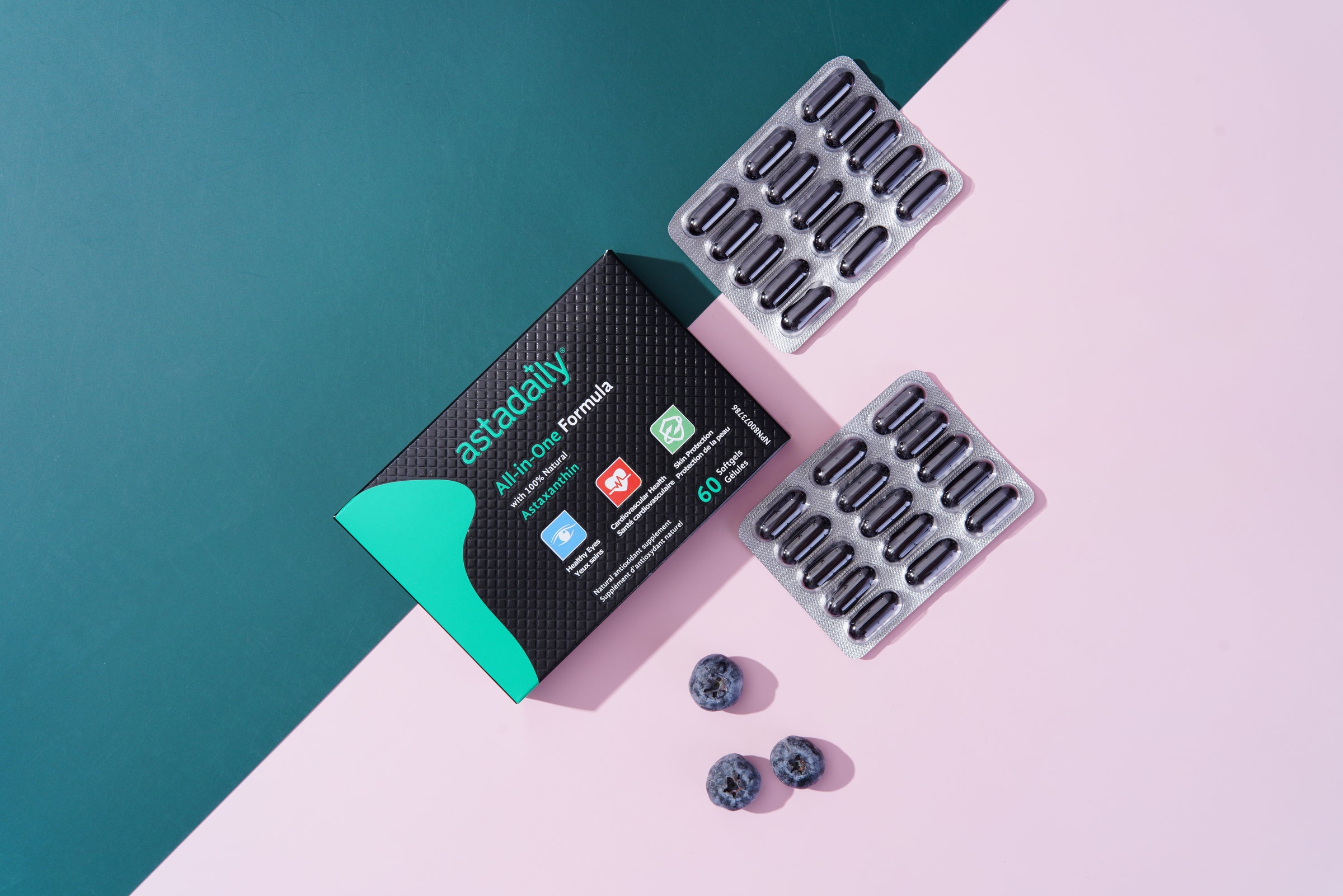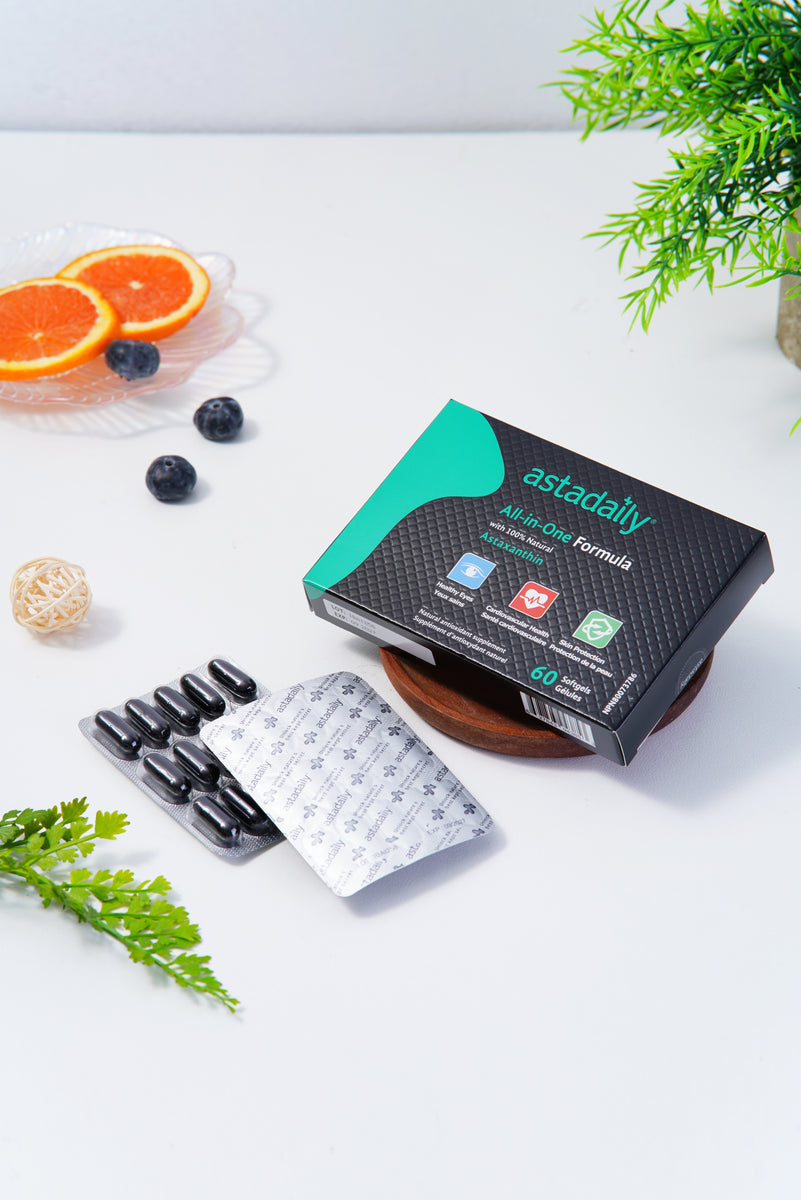Inside-Out Sun Protection: How Astaxanthin Keeps Your Skin Safe All Day

Introduction: Rethinking Sun Protection
Picture this: you’ve slathered on sunscreen, donned a wide-brimmed hat, yet by the end of the day, your skin still feels tight and looks red. Frustrating, right? That’s because traditional sun protection only guards the surface. But what if you could protect your skin from the inside out, at a cellular level?
Enter astaxanthin—a naturally occurring nutrient that’s quickly gaining fame in skincare and wellness circles for its remarkable ability to shield your skin from within.
The Problem: Sun Damage & Skin Health
Understanding UVA vs. UVB Radiation
UV radiation is like an uninvited guest that sneaks into your skin daily. UVA rays penetrate deeply, breaking down collagen and elastin, causing wrinkles and sagging. UVB rays, on the other hand, cause sunburn and trigger oxidative stress. Together, they accelerate premature aging and increase DNA damage, raising long-term skin health risks.
Why Sunscreen Isn’t Enough
Sunscreen is crucial, but it has limits. It can wash off, wear off, or be applied unevenly. Plus, it doesn’t combat oxidative stress inside the skin cells—where much of sun damage actually begins. This is where inside-out protection becomes a game-changer.
Meet Astaxanthin: The Super Antioxidant
What Is Astaxanthin?
Astaxanthin is a carotenoid derived from microalgae. It’s responsible for the pink-orange hue in salmon, shrimp, and flamingos. Beyond its striking color, astaxanthin packs a serious antioxidant punch.
Why It’s Special
Unlike common antioxidants such as vitamin C or E, astaxanthin is fat-soluble, allowing it to integrate directly into cell membranes. This positioning makes it incredibly effective at neutralizing free radicals right where damage starts.
How Astaxanthin Protects from the Inside Out
Neutralizing Free Radicals
UV exposure generates reactive molecules called free radicals. Astaxanthin swoops in like a microscopic bodyguard, neutralizing these radicals before they wreak havoc.

Reducing Inflammation and Redness
If you’ve ever gotten sunburned, you know the pain of inflammation. Astaxanthin helps calm redness and swelling, keeping skin looking healthy after sun exposure.
Preserving Collagen and Elastin
Wrinkles? Sagging? Astaxanthin can help prevent these signs of aging by protecting collagen and elastin fibers from oxidative breakdown.
Scientific Evidence
Studies consistently show that regular astaxanthin supplementation improves skin elasticity, reduces wrinkles, and protects against UV-induced damage—making it a credible ally for radiant skin.
Nature’s Sunscreen: The Microalgae Story
Did you know astaxanthin is nature’s own sunscreen? Tiny microalgae, like Haematococcus pluvialis, produce astaxanthin when exposed to intense sunlight. It acts as a natural shield, protecting these delicate organisms from UV damage, oxidative stress, and even dehydration.
Think of it this way: microalgae live in shallow ponds and oceans where sunlight is intense. To survive, they create astaxanthin, which absorbs UV rays and neutralizes free radicals—basically, a microscopic sunblock. Over time, this astaxanthin makes its way up the food chain—salmon, shrimp, and flamingos eat these algae and store the nutrient in their skin and tissues, which gives them their signature pink-orange color.
This is why taking astaxanthin directly from microalgae is smarter than relying solely on seafood. You skip the middlemen, get a concentrated, pure dose, and avoid unnecessary substances that may come from fish or shellfish.
Astaxanthin vs. Sunscreen
Think of sunscreen as your armor and astaxanthin as your inner shield. Sunscreen stops damage at the surface, while astaxanthin fortifies cells from within. For optimal protection, pairing both is the smart move.
Incorporating Astaxanthin into Your Routine
Natural Food Sources
Many of the foods we regularly consume, like wild salmon, shrimp, lobster, and krill, contain astaxanthin—but there’s a catch. These animals get their astaxanthin from microalgae, meaning we’re taking it indirectly. While eating seafood provides some benefits, it also comes with other substances we may not want, such as cholesterol or environmental contaminants.
A more efficient option? Directly obtaining astaxanthin from microalgae supplements. This way, you cut out the middleman (the seafood) and get a purer, more concentrated dose, free from unwanted extras.
Supplements and Dosage
For concentrated protection, supplements of 4–12 mg/day are common. Consistency is key—results typically appear after a few weeks.
How Long Until Results Appear
Astaxanthin builds up in your skin over time. Most people notice improvements in skin elasticity, redness reduction, and overall radiance after 4–6 weeks of regular intake.
Safety & Considerations
Astaxanthin is generally safe, even at higher doses. Overconsumption may cause a harmless orange tint to the skin, but serious side effects are rare. Importantly, it does not replace sunscreen—it’s a complementary layer of protection.
Takeaways
The concept of layered protection is simple but effective: use sunscreen, wear protective clothing, seek shade, and add astaxanthin to your diet. Not only does this support skin health, but it also benefits eyes, heart, and overall wellness.
Inside-out sun protection is more than a trend—it’s a lifestyle choice. Astaxanthin offers a potent way to keep your skin resilient, youthful, and radiant while complementing your daily sunscreen routine. Start thinking about your skincare from the inside out, and consider adding this super antioxidant to your wellness arsenal.







Leave a comment